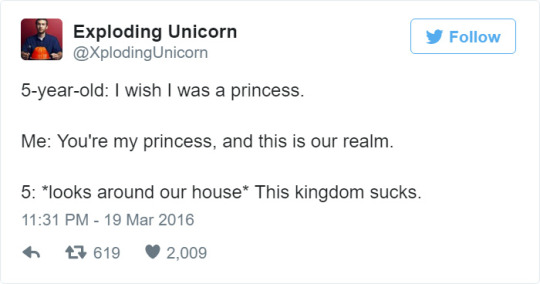Linguistic and other ramblings. (Hover over IPA transcriptions for English. Try it yourselves, first!)
Don't wanna be here? Send us removal request.
Text
What do you call a programming linguist?
Programmar
63 notes
·
View notes
Photo






At Google, we spend a lot of time thinking about how computer systems can read and understand human language in order to process it in intelligent ways. Today, we are excited to share the fruits of our research with the broader community by releasing SyntaxNet, an open-source neural network framework implemented in TensorFlow that provides a foundation for Natural Language Understanding (NLU) systems. Our release includes all the code needed to train new SyntaxNet models on your own data, as well as Parsey McParseface, an English parser that we have trained for you and that you can use to analyze English text.
Parsey McParseface is built on powerful machine learning algorithms that learn to analyze the linguistic structure of language, and that can explain the functional role of each word in a given sentence. Because Parsey McParseface is the most accurate such model in the world, we hope that it will be useful to developers and researchers interested in automatic extraction of information, translation, and other core applications of NLU.
Announcing SyntaxNet: The World’s Most Accurate Parser Goes Open Source
At Google, we spend a lot of time thinking about how computer systems can read and understand human language in order to process it in intelligent ways.
1K notes
·
View notes
Photo








set me free, leave me be, i don’t wanna fall another moment into your gravity
257 notes
·
View notes
Quote
fire += fuel
Me, describing the ever-growing pile of issues I got alerted for today at work
1 note
·
View note
Text
In linguistics, a filler is a sound or word that is spoken in conversation by one participant to signal to others that he/she has paused to think but is not yet finished speaking. These are not to be confused with placeholder names, such as thingamajig, which refer to objects or people whose names are temporarily forgotten, irrelevant, or unknown.
In Afrikaans, ah, em, and eh are common fillers.
In Arabic, يعني yaʿni (“I mean”) and وﷲ wallāh(i) (“by God”) are common fillers.[2][3][4]
In American Sign Language, UM can be signed with open-8 held at chin, palm in, eyebrows down (similar to FAVORITE); or bilateral symmetric bent-V, palm out, repeated axial rotation of wrist (similar to QUOTE).
In Bengali, mane (“it means”) is a common filler.
In Catalan, eh /ə/, doncs (“so”), llavors (“therefore”), and o sigui (“it means”) are common fillers.
In Czech, tak or takže (“so”), prostě (“simply”), jako (“like”) are used as fillers. Čili (“or”) and že (“that”, a conjunction) might also be others. A person who says jako and prostě as fillers might sound a bit simple-minded to others.[5]
In Danish, øh is one of the most common fillers.
In Dutch, eh, ehm, and dus are some of the more common fillers.
In Esperanto, do (“therefore”) is the most common filler.
In Filipino, ah, eh, ay, and ano are the most common fillers.
In Finnish, niinku (“like”), tota, and öö are the most common fillers.
In French, euh /ø/ is most common; other words used as fillers include quoi (“what”), bah, ben (“well”), tu vois (“you see”), and eh bien (roughly “well”, as in “Well, I’m not sure”). Outside of France, other expressions are tu sais (“you know”), t’sais’veux dire? (“you know what I mean?”), or allez une fois (“go one time”). Additional filler words include genre (“kind”), comme (“like”), and style (“style”; “kind”)
In German, a more extensive series of filler words, called modal particles, exists, which actually do give the sentence some meaning. More traditional filler words are äh /ɛː/, hm, so /zoː/, tja, and eigentlich (“actually”)
In Hebrew, eh is the most common filler. Em is also quite common.
In Hindi, matlab (“it means”) and “Mah” are fillers.
In Hungarian, common filler words include hát (well…) and asszongya (a variant of azt mondja, which means “it says here…”).
In Icelandic, a common filler is hérna (“here”). Þúst, a contraction of þú veist (“you know”), is popular among younger speakers.
In Indonesian (Bahasa Indonesia), anu is one of the most common fillers.
In Italian, common fillers include “tipo” (“like”), “ecco” (“there”) and “cioè” (“actually”)
In Irish Gaelic, abair /ˈabˠəɾʲ/ (“say”), bhoil /wɛlʲ/ (“well”), and era /ˈɛɾˠə/ are common fillers, along with emm as in Hiberno-English.
In Japanese, common fillers include eetto, ano, sono, and ee.
In Kannada,Matte for also,Enappa andre for the matter is are the common fillers.
In Korean, eung, eo, ge, and eum are commonly used as fillers.
In Lithuanian, nu, am and žinai (“you know”) are common fillers.
IN Maltese and Maltese English, mela (“then”), or just la, is a common filler.
In Mandarin Chinese, speakers often say 这个 zhège/zhèige (“this”) or 那个 nàge/nèige (“that”). Another common filler is 就 jìu (“just/precisely”).
In Norwegian, common fillers are øh, altså, på en måte (“in a way”), ikke sant (literally “not true?”, “no kidding”, or “exactly”), vel (“well”), and liksom (“like”). In Bergen, sant (“true”) is often used instead of ikke sant. In the Trøndelag region, skjø’ (“see?” or “understand?”) is also a common filler.
In Persian, bebin (“you see”), چیز “chiz” (“thing”), and مثلا masalan (“for instance”) are commonly-used filler words. As well as in Arabic and Urdu, يعني yaʿni (“I mean”) is also used in Persian. Also, eh is a common filler in Persian.
In Portuguese, tipo (“like”) is the most common filler.
In Romanian, deci /detʃʲ/ (“therefore”) is common, especially in school, and ă /ə/ is also very common (can be lengthened according to the pause in speech, rendered in writing as ăăă), whereas păi /pəj/ is widely used by almost anyone.
In Russian, fillers are called слова-паразиты (“vermin words”); the most common are Э-э (“eh”), это (“this”), того (“that”), ну (“well”), значит (“it means”), так (“so”), как его (“what’s it [called]”), типа (“like”), and как бы (“[just] like”).
In Serbian, znači (“means”) and ovaj (“this”) are common fillers.
In Slovak, oné (“that”), tento (“this”), proste (“simply”), or akože are used as fillers. The Hungarian izé (or izí in its Slovak pronunciation) can also be heard, especially in parts of the country with a large Hungarian population. Ta is a filler typical of Eastern Slovak and one of the most parodied features.
In Slovene, pač (“but”, although it has lost that meaning in colloquial, and it is used as a means of explanation), a ne? (“right?”), and no (“well”) are some of the fillers common in central Slovenia, including Ljubljana.
In Spanish, fillers are called muletillas. Some of the most common in American Spanish are e /e/, este (“this”), and o sea (roughly means “I mean”).[6], in Spain the previous fillers are also used, but ¿Vale? (“right?”) and ¿no? are very common too.
In Swedish, fillers are called utfyllningsord; some of the most common are öhm, ja (“yes”), ba (comes from “bara”, which means “just”), asså or alltså (“therefore”, “thus”), va (comes from “vad”, which means “what”), and liksom and typ (both similar to the English “like”).
In Ukrainian, ой /ɔj/ is a common filler.
In Urdu, yani (“meaning…”), falan falan (“this and that”; “blah blah”), umm, and aaa are also common fillers.
In Telugu, ikkada entante (“Whats here is…”) and tarwatha (“then…”) are common and there are numerous like this.
In Tamil, paatheenga-na (“if you see…”) and apparam (“then…”) are common.
In Turkish, yani (“meaning…”), şey (“thing”), “işte” (“that is”), and falan (“as such”, “so on”) are common fillers.
In Welsh, de or ynde is used as a filler (loosely the equivalent of “You know?” or “Isn’t it?”). Ym… and Y… are used similarly to the English “um…”.
90K notes
·
View notes
Text
Can I just… talk for a moment… about how much I love how, if you know them well, words don’t have synonyms?
English, for example, is a fantastic disaster. It has so many words for things that are basically the same, and I find there’s few joys in writing like finding the right word for a sentence. Hunting down that peculiar word with particular meaning that fits in seamlessly in a structure, so the story flows on by without any bumps or leaks.
Like how a shout is typically about volume, while a yell carries an angry edge and a holler carries a mocking one. A scream has shrillness, a roar has ferocity, and a screech has outrage.
This is not to say that a yell cannot be happy or a holler cannot be complimentary, or that they cannot share these traits, but they are different words with different connotations. I love choosing the right one for a sentence, not only for its meanings but for how it sounds when read aloud. (Do I want sounds that slide together, peaceful and seamless, or something that jolts the reader with its contrast? Snap!)
I love how many words for human habitats there are. I love how cottage sounds quaint and cabin sounds rustic. I love steadiness of house, the elegance of residence, the stateliness of manor, and tired stubbornness of shack. I love how a dwelling is different to a den.
And I love how none of them can really touch the possessive warmness of all the connotations of home.
Words are great.
91K notes
·
View notes
Photo










Dad Of 4 Girls Tweets Conversations With His Daughters, Proves Parenting Is Fun
524K notes
·
View notes
Photo








make me choose: jeffrey-winger asked: community or supernatural? Chaos already dominates enough of our lives. The universe is an endless raging sea of randomness. Our job isn’t to fight it, but to weather it together, on the raft of life. A raft held together by those few, rare, beautiful things that we know to be predictable: Us.
204 notes
·
View notes
Photo
This is so cute. Watch the video at the end of the linked article. The way their eyes light up is so touching.

What a sign of love.
Sisters Pose For A Photo At Disney World, But Keep Your Eyes On Minnie Mouse’s Hands
82 notes
·
View notes
Link
It’s official: A federal judge has overturned Mississippi’s ban on same-sex couples adopting children. That means it’s finally legal in all 50 states for a same-sex couple to adopt.
Mississippi’s law banning same-sex adoption went into effect in 2000. Alabama, Florida, Nebraska and Michigan all had similar bans in place, but while theirs were all overturned, Mississippi’s remained. Until now.
U.S. District Judge Daniel Jordan issued a preliminary injunction against the ban, citing the Supreme Court’s decision legalizing same-sex marriage nationwide last summer. The injunction blocks Mississippi from enforcing its 16-year-old anti-gay adoption law.
The Supreme Court ruling “foreclosed litigation over laws interfering with the right to marry and rights and responsibilities intertwined with marriage,” Jordan wrote. “It also seems highly unlikely that the same court that held a state cannot ban gay marriage because it would deny benefits — expressly including the right to adopt — would then conclude that married gay couples can be denied that very same benefit.”
This is an incredible moment, y’all. Families are families, no matter what we look like. Congratulations especially to you, Mississippi. <3
31K notes
·
View notes





















